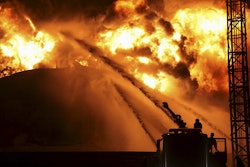Going green has set the bar high for manufacturing companies across North America. According to the Energy Information Administration (EIS), the U.S. industrial sector consumes approximately one-third of all U.S. delivered energy as a whole. Given the reality of rising energy prices and federal legislation and regulation, it’s no surprise the industrial sector is adopting advanced technologies to reduce energy consumption and lessen its impact on the planet. Some of biggest manufacturing companies are raising the bar where corporate responsibility is concerned, pushing for greener, more sustainable operations.
Shed some light on your energy usage
Over the past decade, some companies have made considerable progress with initiatives, including tracking carbon footprints, establishing corporate waste reduction goals, and rolling out enterprise-wide attention and awareness programs. There is still more work to be done, though. Manufacturers have a number of lean transformations to consider for plant efficiency. Reconsidering a facility’s electrical lighting can play a critical role in improving all aspects of day-to-day operations.
Because manufacturing facilities are generally operating 24/7, upgrading the lighting system can help lower overhead maintenance and energy costs. Lighting technologies have improved dramatically over recent years. With advanced electronic ballasts and more efficient light sources, modern systems save 20-45 percent over those installed as recently as 10 years ago. Tailoring a smart lighting controls strategy to a plant’s operational needs can further reduce energy bills.
Green considerations
So where should manufacturers start? There are a number of variables to consider when choosing lighting for your manufacturing facility. Designing lighting for industrial facilities is an exercise in ensuring appropriate illumination levels to the tasks performed in each area of the facility. Selecting lighting levels by application is critical to workplace efficiency and safety. The Illuminating Engineering Society (IES) recommends illumination requirements tailored to all types of manufacturing processes, tasks and conditions.
Here are seven important lighting considerations for manufacturing executives looking to upgrade their facilities:
- Manufacturing and Fabrication – Profitability in an industrial facility depends on high operational efficiency in manufacturing processes where quality goods can be produced in a safe environment and defects can be eliminated quickly. Recommended illumination to support these activities can vary greatly depending on intricacy, process speed, contrast, level of automation and cleanliness of the operation. Manufacturers should pay special attention when illuminating these areas to ensure lighting does not mask the motion of machinery, which may cause injury.
- Assembly and Inspection – Assembly areas, one of the most important areas in any facility, can require five to eight times the amount of illumination of other areas. The configuration of work cells and specific task requirements will determine the overall needs of the lighting system. Task lighting at workstations offers the most design flexibility and optimal energy benefits, while allowing adjustments for personal comfort. The defect identification process will dictate whether inspection lighting needs to be more or less diffuse, come from a particular direction and whether higher color rendering light sources are needed in order to accurately identify product attributes.
- Warehouse and Logistics – Storage and equipment configuration will determine the best luminaire photometric distribution for achieving uniform, glare-free illumination, particularly on vertical surfaces where reading case labels are critical for product and part identification. The use of occupancy sensors is recommended to help optimize energy savings. Lighting in this area should always be flexible to highlight areas at times of high traffic and potential conflict, such as loading docks and fork truck drive lanes.
- Administration Spaces – Front office areas should not be overlooked for lighting upgrade opportunities. Recent advancements in lighting technologies and controls can realize energy cost reductions of 20 percent or more.
- Exterior Areas – Safety, security and maintenance concerns for building perimeter and parking areas with older lighting systems can easily be addressed with longer life, better lighting options. Light trespass and sky glow should be considered to minimize environmental impact and maintain good community relations.
- Signage and Wayfinding – Illuminated signage is a great way to reinforce and refresh brand identity. Additionally, wayfinding provides visual cues for visitors, employees and first responders in case of emergency.
- Special Environments – There are a wide range of environmental constraints such as temperature, humidity, vibration and cleanliness requirements to process parameters that can affect the selection of light sources. These should be considered when determining what lighting is best suited for a given area.
Go green, save green
Given the large amount of square footage that needs to be illuminated in a typical manufacturing or distribution facility, executives should evaluate each of these opportunities for improvement. They don’t have to do it alone though. A thorough design audit by a provider of lighting and energy solutions like SYLVANIA Lighting Services can identify where improved lighting is needed in a facility. Lighting professionals can also provide a cost, benefits and ROI analysis modeling on a variety of lighting system options to help determine what will be the most cost-effective solution for a given facility.
Green facilities aren’t just healthier for people and the planet. With possible energy savings of up to 70 percent on the table with a fully integrated lighting control system, today’s advanced lighting systems are healthy for the bottom line as well. Employing systems that reduce a facility’s environmental impact builds a positive image for your brand and saves dollars on energy use and facility maintenance. Between evolving regulations, increasing utility rebate opportunities and the savings that pursuing sustainability can bring to your facility, there’s never been a better time to flip the switch.
For more food industry news and information, subscribe here and follow us on Twitter, Facebook or LinkedIn.



















